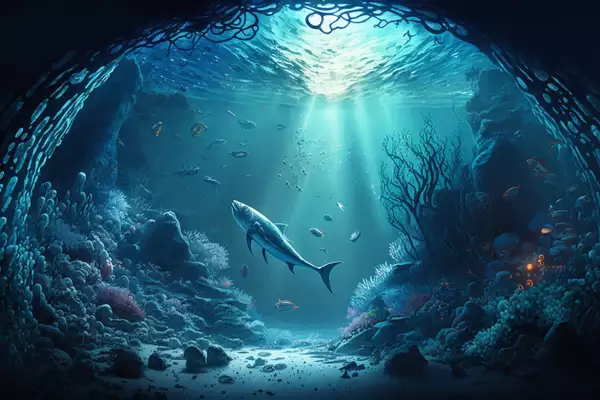Under ‘Deep Ocean Mission’ India will embark on a journey to a depth of 6,000 metres in the Indian ocean to explore deep ocean minerals.
- Matsya 6000 is India’s flagship deep-ocean human submersible to reach 6,000 m deep in the ocean.

About Deep Ocean Mission (DOM):
- DOM is India’s ambitious programme to explore Indian oceans, chiefly implemented by the Ministry of Earth Science.
- It is one of nine missions under the Prime Minister’s Science, Technology, and Innovation Advisory Council (PMSTIAC).
- Supports the blue-economy priority area, blue trade, and blue manufacturing in India.
- MoES is working on an integrated system to mine polymetallic nodules (PMNs) of precious minerals (copper, manganese, nickel, and cobalt) from the central Indian Ocean bed.
- The United Nations International Seabed Authority (ISA) has allocated these minerals to be mined.
Six pillars of DOM include:
- Development of technologies for deep-sea mining and a manned submersible to carry three people to a depth of 6,000 metres in the ocean.
- Submersible will be equipped with scientific sensors, tools, and an integrated system for mining PMNs from the central Indian Ocean;
- Polymetallic nodules (manganese nodules), are rock concretions formed of concentric layers of iron and manganese hydroxides around a core.
- Submersible will be equipped with scientific sensors, tools, and an integrated system for mining PMNs from the central Indian Ocean;
- Development of ocean climate change advisory services, involving an array of ocean observations and models to understand and provide future climate projections;
- Technological innovations for the exploration and conservation of deep-sea biodiversity;
- Identifying potential sites of multi-metal hydrothermal sulphides mineralisation along the Indian Ocean mid-oceanic ridges;
- Harnessing energy and freshwater from the ocean; and
- Establishing an advanced Marine Station for Ocean Biology, as a hub for nurturing talent and driving new opportunities in ocean biology and blue biotechnology.
Challenges of India’s DOM:
- The high pressure in the deep oceans is the main challenge in exploring the oceans.
- Electronics and instruments find it simpler to function in a vacuum or in space than under huge pressures of oceans.
- Incredibly soft and muddy surface of oceans make it difficult for heavy vehicles to land or manoeuvre, as they would inevitably sink.
- Large amount of power and energy are required to extract and pump minerals to the surface.
- Visibility is also a significant hurdle as natural light can barely penetrate deep in the oceans.
- Variations in temperature, corrosion, salinity, etc. also pose challenges.
About Varaha:

- Varaha is a self-propelled seabed mining machine for the collection of PMNs.
- It will collect and pump nodules, steadily and continuously over prolonged durations in the deep-sea conditions.
- Designed and developed by the National Institute of Ocean Technology (NIOT).
Other key facts:
- The decade 2021-2030 have been designated by the United Nations as the ‘Decade of Ocean Science’.
Ref: Source
| UPSC IAS Preparation Resources | |
| Current Affairs Analysis | Topperspedia |
| GS Shots | Simply Explained |
| Daily Flash Cards | Daily Quiz |


